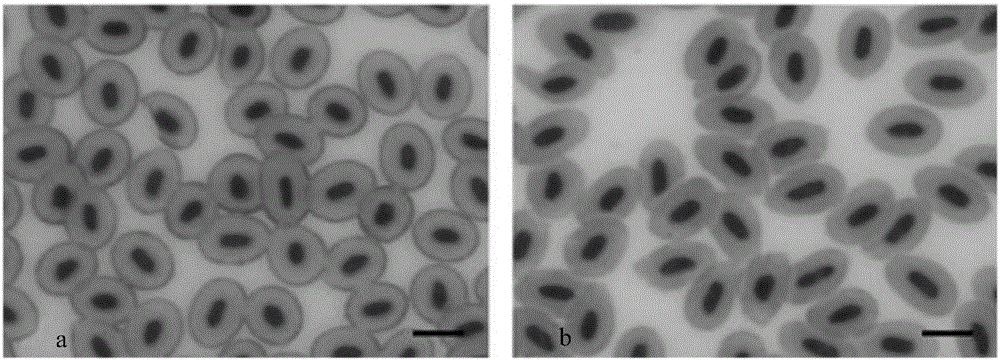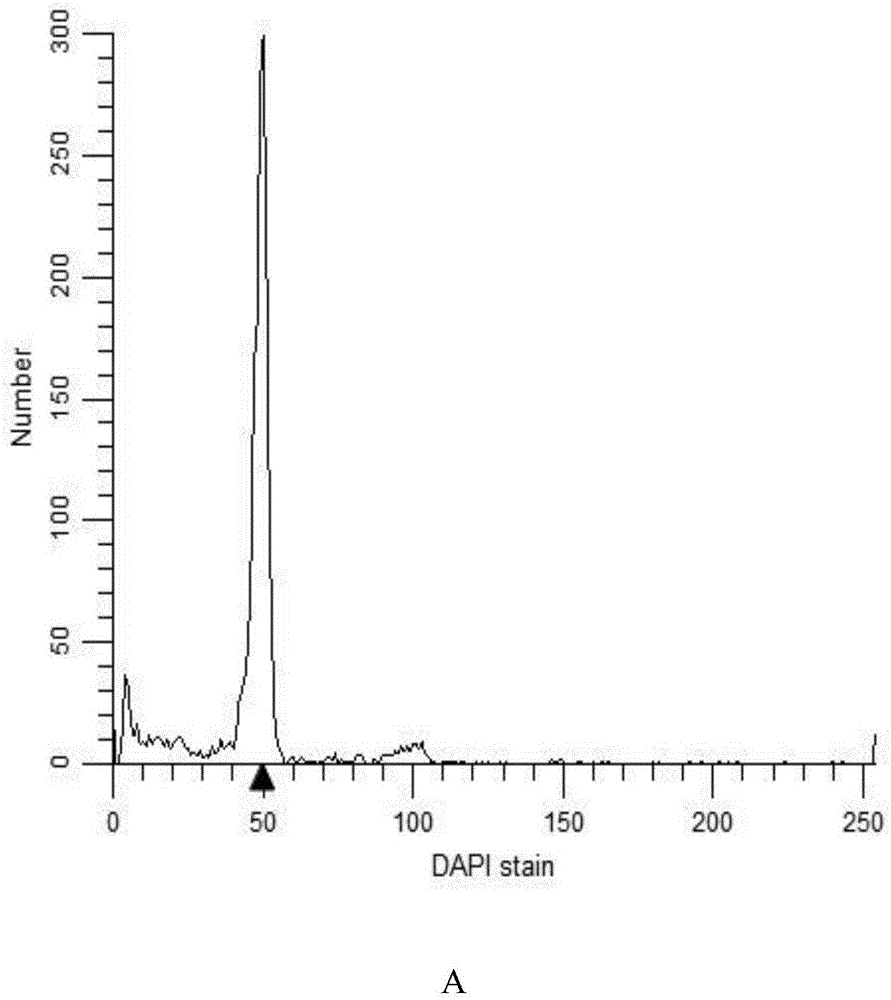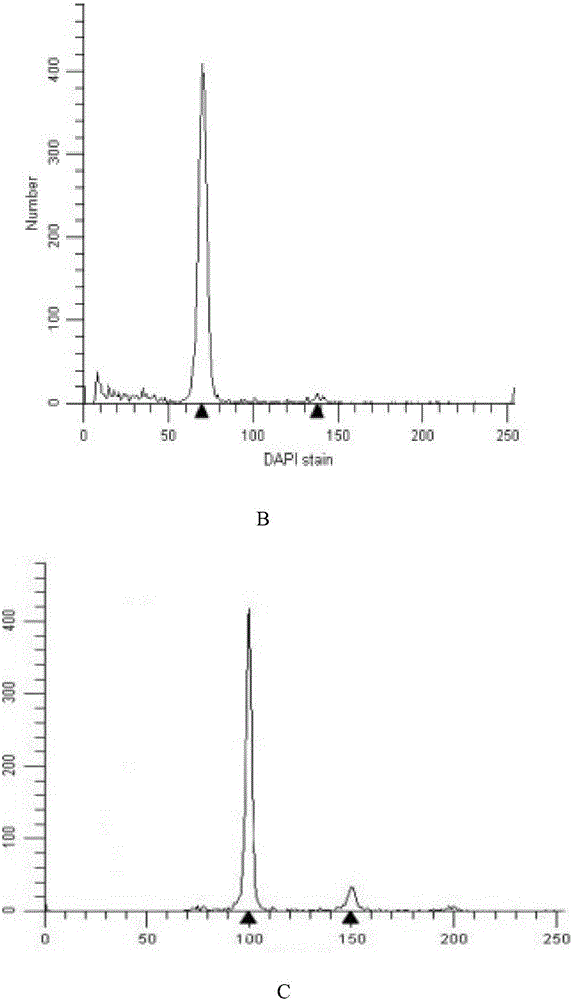Method for producing loach tetraploid
A technology of tetraploid and tetraploid loach, applied in the biological field, can solve problems such as difficulty in finding living tetraploid fish and inability to hatch larvae
- Summary
- Abstract
- Description
- Claims
- Application Information
AI Technical Summary
Problems solved by technology
Method used
Image
Examples
Embodiment Construction
[0016] The present invention will be described in detail below in conjunction with specific embodiments.
[0017] material method
[0018] The male broodstock used was natural tetraploid loach (4n=100) (♂) from Chibi City, Hubei Province, and the female broodstock diploid loach (2n=50) (♀) was obtained from the farmers’ market in Dalian. The ploidy menstrual blood red The cell nuclei volume measurement and flow cytometry detection confirmed that they were temporarily kept in the aquarium of the Cytogenetics and Engineering Laboratory, and the temporary storage temperature was 22±1°C.
[0019] Healthy loach individuals with well-developed gonads and no body surface were selected as parents for crossbreeding, induced labor, and dry fertilization. Immediately after fertilization, place them in water at 0, 3, and 6°C for 50-60 minutes, then place them in normal temperature (22±1°C) aerated water for normal hatching, and take no cold shock treatment as the control group. Change t...
PUM
 Login to View More
Login to View More Abstract
Description
Claims
Application Information
 Login to View More
Login to View More - R&D
- Intellectual Property
- Life Sciences
- Materials
- Tech Scout
- Unparalleled Data Quality
- Higher Quality Content
- 60% Fewer Hallucinations
Browse by: Latest US Patents, China's latest patents, Technical Efficacy Thesaurus, Application Domain, Technology Topic, Popular Technical Reports.
© 2025 PatSnap. All rights reserved.Legal|Privacy policy|Modern Slavery Act Transparency Statement|Sitemap|About US| Contact US: help@patsnap.com



